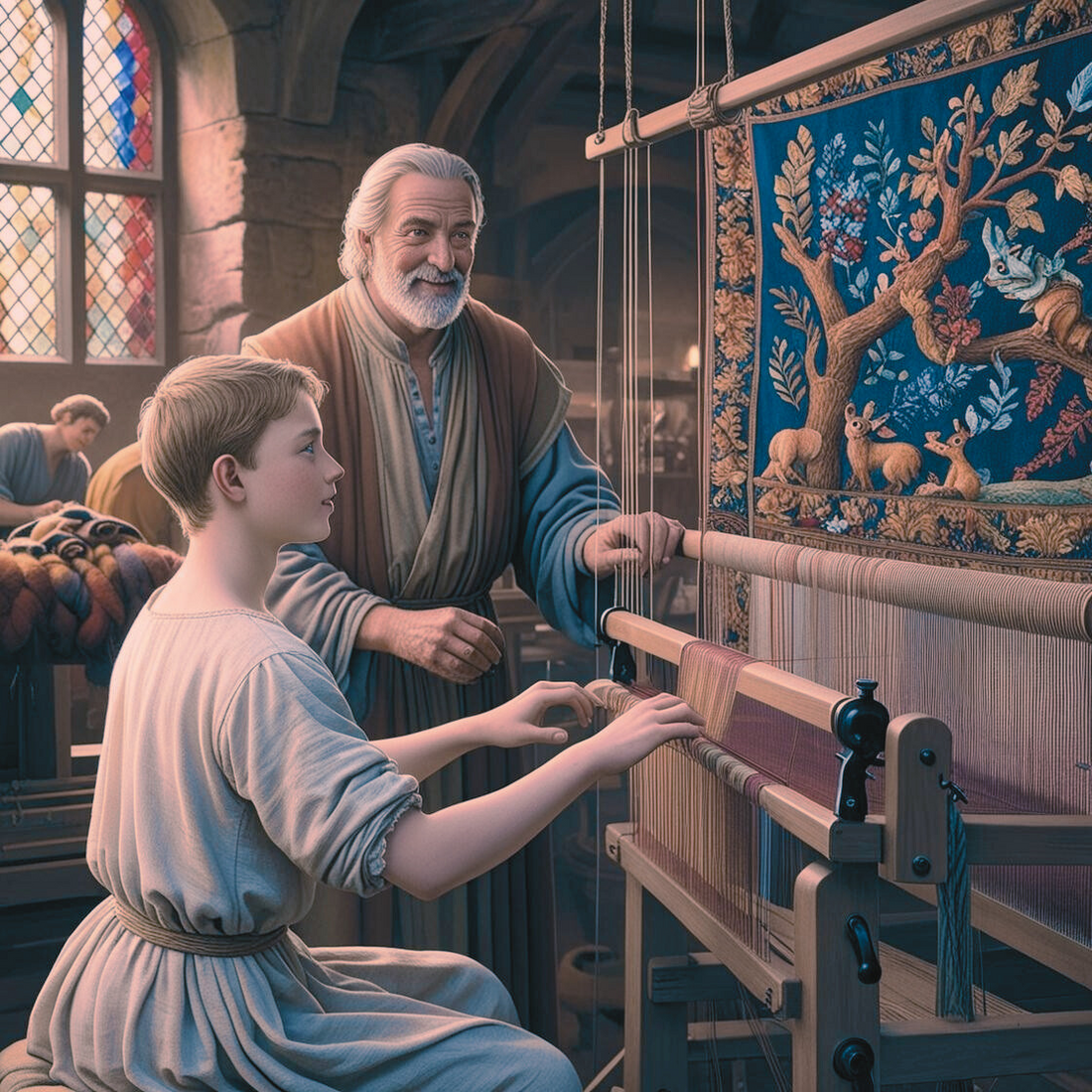
The Medieval Tapestry Weaver: A Craft of Precision and Patience
Becoming a tapestry weaver in medieval England was not something to be taken lightly. This was a skill honed over many years, requiring a deep understanding of both the artistry and the painstaking technical details involved. Tapestry weaving was far from a casual profession; it demanded dexterity, patience, and a refined knowledge of various complex techniques.
Young apprentices usually began their training between the ages of 10 and 14, embarking on a journey that would last several years—often stretching to a decade or more. In general, an apprenticeship under a master weaver was regulated by the local guild and typically lasted around seven years. During this period, the apprentice learned the fundamentals: how to handle threads, how to manipulate the loom, and how to master the art of knotting and weaving. But the true depth of the craft came with experience. Over the years, the apprentice would gradually build their skill set, from weaving basic patterns to eventually working on more intricate designs.
Medieval tapestries were grand in scale, sometimes sprawling across entire walls, and the creation of such works was a collaborative effort. An apprentice, even after several years of training, would often be tasked with weaving only a small portion of a tapestry. This allowed the master weaver to oversee the entirety of the project while giving apprentices the chance to specialize in certain techniques. Over time, this division of labor led to the creation of stunning, multi-sectional works, some of which depicted historical events, religious themes, or courtly life.
Of particular note in the weaver’s education was the mastery of dyes. Unlike the synthetic dyes we have today, medieval weavers had to extract color from natural sources. Apprentices learned to make vibrant dyes from plant-based materials such as woad (for blue) and madder (for red), as well as from insects like cochineal. This knowledge was vital, as the weaver had to ensure that the dyes wouldn’t fade or run while weaving, which was a delicate and time-consuming process. Properly fixing these dyes into the fabric to prevent fading over time was an essential skill learned during their training.
Once an apprentice completed their training, they advanced to the status of journeyman. This phase, typically lasting 3 to 5 years, was a transitional period where the journeyman would continue to perfect their craft, often working for various masters or independently. Although they were no longer apprentices, journeymen were still not full guild members. During this time, they might work on more complex commissions and, in some cases, create their own tapestries. Only after demonstrating exceptional skill—often through the completion of a "masterpiece"—could a journeyman ascend to the rank of master, thereby earning full membership in the guild.
The life of a medieval tapestry weaver was demanding, both physically and mentally, yet it was also one of great prestige. Tapestries were not simply decorative items; they were a symbol of wealth and power, adorning the halls of kings, queens, and the clergy alike. Each piece told a story, captured a moment in history, or showcased the cultural sophistication of the time.
References:
- Gere, C. & Major, J. (2000). The Tapestry of Medieval Art: Techniques and Processes. London: Victoria & Albert Museum.
- A detailed exploration of the techniques and materials used in medieval tapestry weaving.
- Cohen, M. (2011). Medieval Craftsmanship: The Art of Tapestry Weaving. Oxford University Press.
- An examination of the apprenticeship process and the role of guilds in shaping the expertise of weavers.
- Harbison, P. (1991). The Art and Craft of Tapestry in the Middle Ages. Cambridge: Cambridge University Press.
- A comprehensive analysis of tapestry weaving, from training to the creation of grand works.
- Janson, H. W. (2001). The History of Art: A Survey of the Visual Arts from Prehistory to the Present. New York: Abrams.
- A broad context of the cultural significance of tapestry in medieval art.
- Twilley, M. (2019). Medieval Dyes and Their Sources: A Practical Guide. London: Bloomsbury Academic.
- A thorough reference on the dyes used by medieval tapestry weavers.
